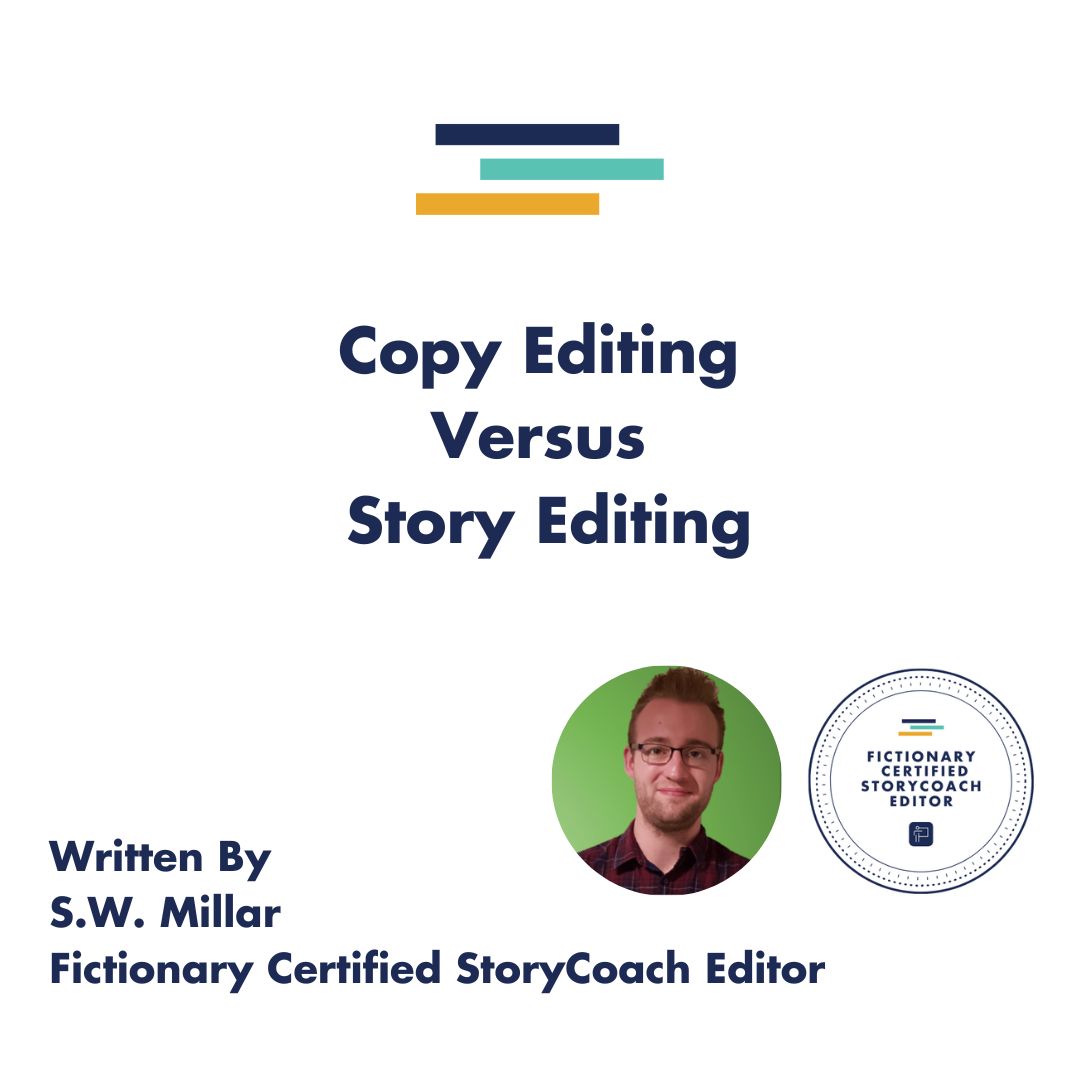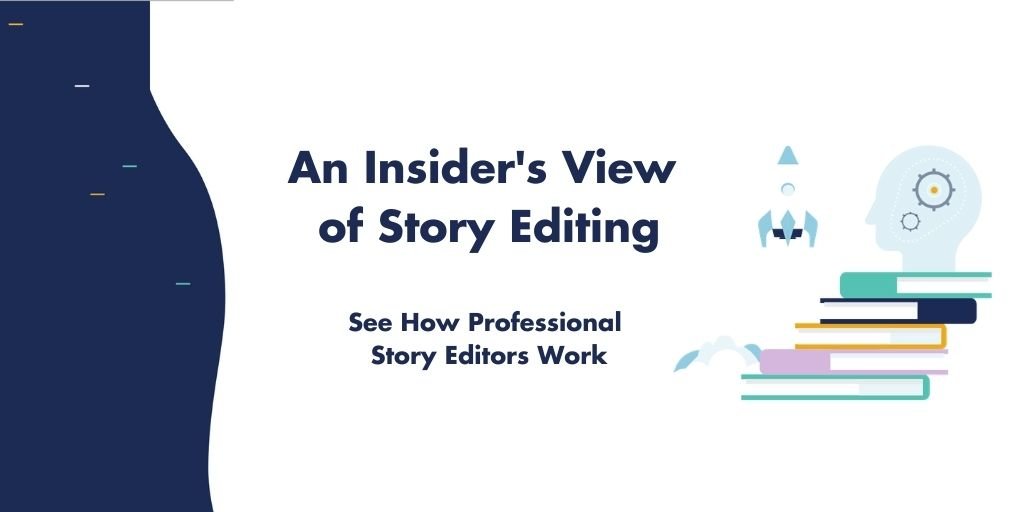
So, you’re a copy editor, but you’re considering becoming a story editor, eh?
Or perhaps you’re tentatively dipping your toes into the editing career pool, and wondering what the difference is between being a copy editor and a story editor?
Either way, I’ve got you covered.
Before we discuss making the transition from copy editor to story editor, let’s discuss the roles of copy editor and story editor, and how they differ.
What Does a Copy Editor Do?
Copy editing is editing at the sentence level, and it’s the last thing you do before giving your manuscript a final proofread.
It’s a copy editor’s job to examine the following:
- Spelling errors: No matter how many times an author reads their manuscript, these pesky blighters continue to crop up
- Grammar and Punctuation: A copy editor knows one end of an Oxford comma from another
- Repetition: This could be repeated phrases, words, or sentence structures
- Cliches: Searching for cliches can open a massive can of worms… see what I did there?
- Sentence Structure: This includes things like passive voice and confusing jargon
- Adverbs: You absolutely, definitely, certainly don’t want too many “ly” words in a manuscript
- Consistency: Does the author prefer en-dashes over em-dashes, and is capitalisation consistent?
- Sentence Length: Are shorter sentences and longer sentences used in the appropriate places (i.e., shorter sentences in action scenes and longer sentences in sequel [reaction] scenes)?
- Sentence Starters: Starting too many sentences in a row with the same word is repetitive, and a copy editor will be on the lookout for this
You can find out more about performing a sentence level copy edit from Fictionary Certified StoryCoach and founder of First Editing, JoEllen Nordstrom.
What Does a Story Editor Do?
Fictionary specialises in story editing so—without blowing our own trumpets too loudly, and with very little fanfare—you’ve come to the right place to learn about it.
An author hands over their manuscript to a story editor after they’ve finished their first draft and tightened it up as much as they can using their self-editing skills.
What is a story editor, I hear you ask?
Story editors look at the big picture stuff in a novel, evaluating:
Character

In my humble opinion readers read, first and foremost, for character, not plot. They only care about the car chases, sword fights, lovers quarrels etc. because they’re happening to characters they care about and relate to.
A story editor examines the following character elements:
- Point of View Consistency
- Point of View Character Goals (External and Internal)
- Character Arc
- Stakes for the Point of View Character
- Character Motion (or Movement within a Scene)
Plot

The plot is the framework that holds novels together. Plot events give characters something to do, and create tension and conflict.
A story editor examines the following plot elements:
- Story Arc (the key scenes of Inciting Incident, Plot Point 1, The Midpoint, Plot Point 2, The Climax and The Resolution)
- Scene Opening and Closing Types
- Scene Anchoring
- Scene Entry and Exit Hooks
- Tension and Conflict
- Backstory
- The Balance Between Action and Sequel Scenes (Pacing)
Setting

Setting is the “stage” on which novels take place. Authors need to paint a vivid picture of what’s happening to orient readers.
A story editor examines the following setting elements:
- Point of View, Time, and Location (Anchoring)
- The Five Senses (Sight, Sound, Smell, Taste, Touch)
- Weather (to create tension and atmosphere)
- The Emotional Impact Each Location has on the Protagonist
Want to find out more about the different stages of the editing process? Check out this awesome article by Fictionary’s CEO, Kristina Stanley: Revise Your Story.
What Do You Need to Do to Change from Being a Copy Editor to being a Story Editor?
If you want to pivot your editing career from copy editing to story editing, there are three things you need.
You need to know:
- How Story Works: Do you know what makes for compelling character arcs, punchy plots, and sensational settings?
- How to Carry Out an Objective Story Edit: It’s no good giving authors vague advice like, “I liked this,” or, “this wasn’t bad,” or, “I hated this.” Writers need positive and constructive feedback, provided using an objective framework.
- How to Deliver Feedback: If you’re new around here, us Fictionary Certified StoryCoach Editors take a kindness first approach to delivering feedback. Writers need to know what works. They also need to know what doesn’t work and why. That doesn’t mean you have to rip their manuscript (or them) to shreds.
So, how can you learn all this great stuff?
You can become a Fictionary Certified StoryCoach Editor.
Now I might be (read: most definitely am) biased, but I researched a metric ton of editing courses before I decided to embark on my journey with Fictionary.
Know what swung it for me?
The ethos of kindness behind everything Fictionary does.
There’s nothing better than helping a writer improve their storytelling skills, while boosting their confidence and helping them produce the best story they can…
…all with kindness.
Want to find out more about becoming a Fictionary Certified StoryCoach Editor? Click here. We’d love you to come on this journey with us.
Conclusion
Copy editing and story editing (while both essential parts of the editing process), are radically different.
If you’re a copy editor who wants to become a story editor look no further than the Fictionary StoryCoach Certification Training Programme.
About Shane Millar
 Shane Millar is a Fictionary Certified Story Coach and the author of the Write Better Fiction craft guides. He is also the author of the Myth & Magic and Chosen Vampire urban fantasy thriller series.
Shane Millar is a Fictionary Certified Story Coach and the author of the Write Better Fiction craft guides. He is also the author of the Myth & Magic and Chosen Vampire urban fantasy thriller series.
Shane holds a BA in journalism and is a member of The Alliance of Independent Authors (ALLi). He lives in Buckinghamshire, England.
He has taken too many writing courses to count and enjoys reading as much as possible. Shane is obsessed with five things: the writing craft, mythology, personal development, food, and martial arts movies.
Want to hire Shane to edit your novel? Visit: https://swmillar.com/editing
When do you ever get to see what a story editor delivers to a client if the client is not you?
If you’re thinking of becoming a story editor, this course is for you. Our course gives you an insider’s view of what happens in a story edit. This is similar to a structural or substantive edit for fiction.
Before you hire an editor or edit your own story, it’s important to understand what a story edit is.
Thirteen professional editors edited the same novel.
Each editor worked separately in Fictionary StoryCoach.
This course evaluates their edits and shows you what worked and what didn’t. We’ll show you two scenes before editing and after revisions based on the editors’ suggestions. We even compare the editors’ summary letters and per scene notes.
For writers looking to hire a professional story editor, this course shows you what you should receive from a story editor. It will also show you how an editor might look at your story.’
Sign up now for great value.
On sale for $39 USD. Use Coupon INSIDERSVIEW
Regular Price: $99.


